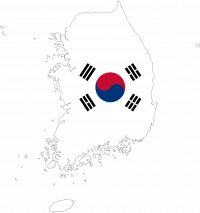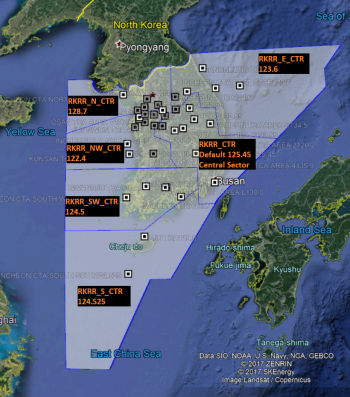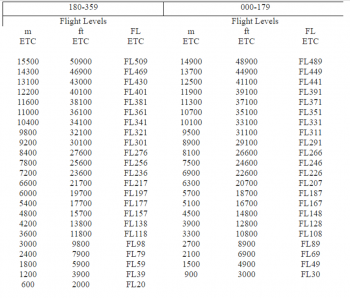Difference between revisions of "RKRR Incheon FIR"
(→Japan LOA) |
(→Japan LOA) |
||
| Line 68: | Line 68: | ||
=== Japan LOA === | === Japan LOA === | ||
| − | Per the [http://www.jasma.jp/rvsmoperation.html Japan Airspace Safety Monitoring Agency], Japan has adapted RVSM airspace, the same as South Korean airspace. Handoffs are normally done at mandatory reporting waypoints on a mix of RNAV and high altitude airways to either Fukuoka Control (RJJJ_CTR) or Tokyo Control (RJTT_CTR). RJTT_CTR is the primary ATC position on IVAO, but if RJJJ_CTR is online, then all handoffs are made to them (Fukuoka). | + | Per the [http://www.jasma.jp/rvsmoperation.html Japan Airspace Safety Monitoring Agency], Japan has adapted RVSM airspace, the same as South Korean airspace. Handoffs are normally done at mandatory reporting waypoints on a mix of RNAV and high altitude airways to either Fukuoka Control (RJJJ_CTR) or Tokyo Control (RJTT_CTR). RJTT_CTR is the primary ATC position on IVAO, but if RJJJ_CTR is online, then all handoffs are made to them (Fukuoka).<br /> |
| − | ANDOL from the L512 RNAV airway | + | '''ANDOL''' from the L512 RNAV airway<br /> |
| − | IGRAS from the Z56-B332 RNAV airway | + | '''IGRAS''' from the Z56-B332 RNAV airway<br /> |
| − | LANAT from the Y6976-G597 airway | + | '''LANAT''' from the Y6976-G597 airway<br /> |
| − | SAPRA from the Y685-G585 RNAV airway | + | '''SAPRA''' from the Y685-G585 RNAV airway<br /> |
| − | KALEK from the Z84 RNAV airway | + | '''KALEK''' from the Z84 RNAV airway<br /> |
| − | INVOK from PSN to join the G339 airway | + | '''INVOK''' from PSN to join the G339 airway<br /> |
| − | APELA from PSN to join the A582 airway | + | '''APELA''' from PSN to join the A582 airway<br /> |
| − | BESNA from the Y781 one way airway eastbound to join the Y209 airway | + | '''BESNA''' from the Y781 one way airway eastbound to join the Y209 airway<br /> |
| − | SAMDO from the A595-Y677 RNAV airway | + | '''SAMDO''' from the A595-Y677 RNAV airway<br /> |
| − | RUGMA from the Z85 RNAV airway or the A586-Y579 airway | + | '''RUGMA''' from the Z85 RNAV airway or the A586-Y579 airway<br /> |
| − | ONIKU from the A593 airway | + | '''ONIKU''' from the A593 airway<br /> |
| − | ATOTI from the Y711 one way RNAV airway soutbound or the B576 RNAV airway | + | '''ATOTI''' from the Y711 one way RNAV airway soutbound or the B576 RNAV airway<br /> |
If Incheon control prefers to give a direct, the direct points shall be to one of the above mention handoff points prior to entering Japanese airspace. | If Incheon control prefers to give a direct, the direct points shall be to one of the above mention handoff points prior to entering Japanese airspace. | ||
Revision as of 03:35, 28 October 2017
안녕하세요 - Annyong Haseyo
Welcome to the RKRR Incheon Flight Information Region (FIR) wiki page for South Korea's airspace, part of the IVAO XE East Asia Region Division! These sets of pages should help provide you with all the information you need while controlling South Korean airspace.
Note: Please keep in mind, IVAO stresses that our network is at global peace without any conflicts between nations. We also strive to simulate realism. So, while it is ok to respect the prohibited airspace at the DMZ between the DPRK and ROK, on IVAO, direct flights are permissible between the two nations. At no time shall any war simulation be performed in Korean airspace as this is a huge violation against IVAO rules and regulations. That being said, enjoy Incheon Control
Contents
Airspace Overview
Incheon Control
Here are a list of the valid center positions IVAO XE authorizes in South Korean airspace.
All radio callsigns are "INCHEON CONTROL" regardless of sector.
| Sector Position | Callsign | Frequency | Coverage Area |
|---|---|---|---|
| Incheon High Central | RKRR_CTR | 125.450 | Primary, High Sector above FL225 when other sectors online. Covers entire FIR when other sectors offline |
| Incheon North | RKRR_N_CTR | 128.700 | North Sector, Seoul TMA and airports as well as RKTI RKRN RKSG RKSO when APP's offline |
| Incheon Northwest | RKRR_NW_CTR | 122.400 | Northwest Sector, RKTP RKJK RKJU RKTU when APP's offline |
| Incheon Southwest | RKRR_SW_CTR | 124.500 | Southwest Sector, Pusan TMA and RKJB RKJJ RKJU RKPS when APP's offline as well as RKRR_S_CTR when offline |
| Incheon South | RKRR_S_CTR | 124.525 | South Sector, RKPC RKPD when APP's offline |
| Incheon East | RKRR_E_CTR | 123.600 | East Sector, RKNW RKNC RKNN RKNY RKND RKTL RKTH RKTN RKTY when APP's offline |
En Route and Cruise
RVSM Airspace
South Korea has RVSM airspace from FL290-FL410, and as such follows standard semi-circular rules in feet (FL).
360-179 odd flight levels (ex. FL290, FL310, FL230)
180-359 even flight levels (ex. FL300, FL240, FL380)
Transition Altitude
All of South Korea has a transition altitude of 14,000 feet and transition level of FL140.
South Korea uses QNH (standard 1013 hectopascals or millibars)
Transponder Codes
En route transponder codes range from 3200-3277
Arrivals into Chinese or Japanese airports will get a range of 7140-7177
Arrivals into South Korean airports will get a range of 5100-5377
Avoid using squawk codes beginning with 40xx, these are reserved for North Korea
China LOA and Meters
All handoffs to Chinese airspace will be given to Shanghai Control (ZSHA_CTR) on an airway at 2 waypoints and at a meters flight level to meet Chinese RVSM airspace requirements.
Traffic routed south will be on the A593 airway and a handoff shall be initiated by LAMEN.
Traffic routed north will be on the Y644 or Z55 airway and a handoff shall be initiated by AGAVO.
Exceptions between these two waypoints can be made at the waypoint IKADI (Chinese airspace) direct to PALSA or TOLIS (Korean airspace) to join the Y655 or aircraft inbound Jeju (RKPC) can be given the TOLIS 1T (runway 25) or TOLIS 1P (runway 07) arrival.
All aircraft entering Chinese airspace must be assigned a meters altitude by Incheon control prior to initiating a handoff to Shanghai or sent to UNICOM. Use the chart below to match the nearest meters level to the flight level they are cruising at or filed in Korean airspace. For example, if they are cruising at FL360, assigned 11,000 meters which will translate to FL361/36,100ft. When an aircraft enters Korean airspace from China, assign a cruise flight level nearest to their meters level as Chinese controllers normally do not assign a FL prior to handing off to Korean controllers.
Japan LOA
Per the Japan Airspace Safety Monitoring Agency, Japan has adapted RVSM airspace, the same as South Korean airspace. Handoffs are normally done at mandatory reporting waypoints on a mix of RNAV and high altitude airways to either Fukuoka Control (RJJJ_CTR) or Tokyo Control (RJTT_CTR). RJTT_CTR is the primary ATC position on IVAO, but if RJJJ_CTR is online, then all handoffs are made to them (Fukuoka).
ANDOL from the L512 RNAV airway
IGRAS from the Z56-B332 RNAV airway
LANAT from the Y6976-G597 airway
SAPRA from the Y685-G585 RNAV airway
KALEK from the Z84 RNAV airway
INVOK from PSN to join the G339 airway
APELA from PSN to join the A582 airway
BESNA from the Y781 one way airway eastbound to join the Y209 airway
SAMDO from the A595-Y677 RNAV airway
RUGMA from the Z85 RNAV airway or the A586-Y579 airway
ONIKU from the A593 airway
ATOTI from the Y711 one way RNAV airway soutbound or the B576 RNAV airway
If Incheon control prefers to give a direct, the direct points shall be to one of the above mention handoff points prior to entering Japanese airspace.
North Korea LOA
See ZKKP Pyongyang FIR for more information on North Korean airspace.
Seoul Arrivals
Terminal Control Areas
under construction


